Two main types of credit make up your credit report: revolving and installment credit. The main difference is how they allow you to borrow money.
We’re breaking down exactly what revolving credit is, how it compares to installment credit, and how it affects your credit score.
How Revolving Credit Works
What is a revolving line of credit?
Revolving credit comes with a credit limit that you either pay off at the end of each billing cycle or make a minimum payment and carry over the remaining balance, accruing interest that gets added on every month.
As you utilize your credit, your available amount decreases, and when you make a payment, it goes back up. The definition of revolving credit is a line of credit that remains available over time and doesn’t have a fixed number of payments.
Examples of Revolving Credit
What qualifies as revolving credit? Here are some of the most common examples:
- Credit Cards
- Business Lines of Credit
- Personal Lines of Credit
- Home Equity Lines of Credit (HELOC)
With a credit card, you get approved for a credit limit that you use and pay on every month. The interest gets added to any remaining balance if not paid in full after the billing cycle closes.
Personal and business lines of credit don’t have a physical card. Instead, these are given to the borrower via a check from the lender.
A home equity loan (HELOC) is money borrowed against the equity in your home. If the payments are made on time, the borrower can use the credit amount up to the limit multiple times. HELOCs differ from home equity loans, which are lump sums with a fixed interest rate.
Revolving Loans vs. Installment Loans
How does revolving credit differ from installment loans?
In contrast to revolving loans, installment loans usually involve borrowing a lump sum of money. This type of loan has different repayment terms, with regular monthly payments and a fixed repayment schedule that can last from a few weeks to months or even years.
Examples of installment loans include mortgages, auto loans, and personal loans.
Pros and Cons of Revolving and Installment Loans
Having a mix of revolving and installment accounts is a good idea to get the most from your credit report. But what are the benefits and downsides of each?
The pros and cons of revolving credit are:
Pros
- Flexibility
- Continued borrowing
- Useful in emergencies
Cons
- High interest rates
- Balances can creep up
The pros and cons of installment credit are:
Pros
- Predicability
- Lower interest rates
- Lump sum payout
Cons
- Need to reapply
- Higher risk
When comparing installment vs. revolving credit, you must know your goals and what you need the money for. Understanding the positives and drawbacks of each type of credit helps you better manage your finances and understand how credit impacts your financial well-being and credit score.
If you require a sum of money upfront, then a personal installment loan is the right choice for you. If you would benefit from a continuous line of credit, a revolving option such as a credit card might better suit your needs.
What are Secured and Unsecured Loans?
Both credit types have secured and unsecured options. A secured loan requires collateral, which can be seized if you default on the loan. An unsecured loan does not require collateral, making the approval process smoother.
Credit cards are typically unsecured, though secured options with a cash deposit exist and can be a good option for people with low credit scores. A HELOC is another example of secured revolving credit.
A personal loan from Balance Credit is an example of unsecured installment credit. We don’t require collateral and even offer loans for bad credit.
How Revolving Credit Impacts Your Credit Score
Like with any credit option, the impact on your credit score is related to how you use your credit and how you handle paying it back.
Things like missing payments, closing accounts, and the hard inquiries from applying for revolving credit lines can have a negative impact on your credit rating. Another factor that impacts your overall rating is the amount of revolving credit you’re using compared to your total limits. This is known as your credit utilization ratio. Closing any accounts reduces the number of accounts you have, meaning it increases your credit utilization ratio.
If your revolving credit has become too much, a debt consolidation installment loan can be a good way to manage credit card debt.
Making on-time payments and maintaining your lines of credit for a long time can help increase or improve your credit rating. The credit bureaus use payment history and the age of your accounts to calculate your credit score.
Additionally, having a mix of revolving and installment credit means your credit report will have a diverse mix of accounts. This can help improve your credit score.
Revolving Credit Not Right For You? Get a Personal Installment Loan from Balance Credit
Revolving credit can be beneficial depending on your financial needs. However, it’s not right for everyone. If ongoing credit isn’t the best option for your financial situation or you need to pay down some high balances, consider a personal loan from Balance Credit. Our online application process is simple and we even have personal loans for bad credit.





